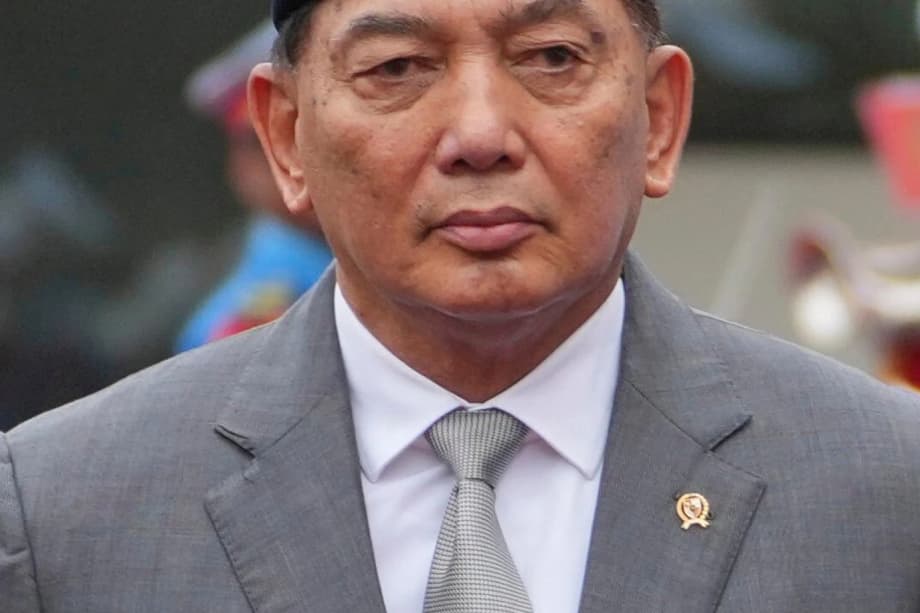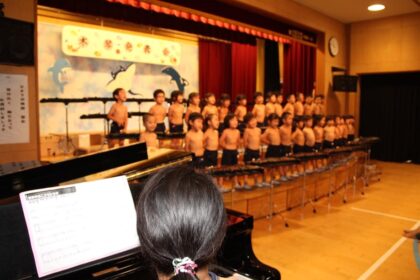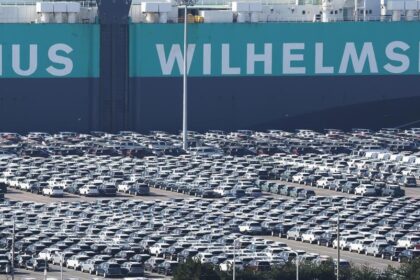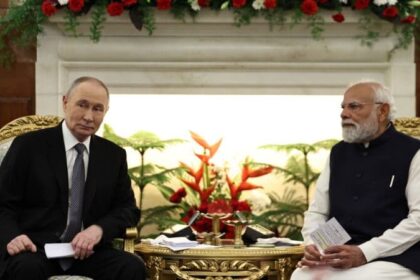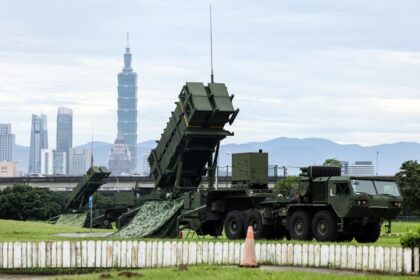Why this purchase matters for Jakarta and the region
Indonesia has moved to acquire at least 42 Chinese made Chengdu J-10C fighter jets, a purchase approved by the finance ministry with a budget that exceeds 9 billion dollars. The decision marks the country’s first major order of combat aircraft from a non Western supplier and signals a new phase in Jakarta’s effort to strengthen air power and renew aging fleets. Delivery details have not yet been disclosed, but the announcement indicates a decisive shift in procurement tempo.
- Why this purchase matters for Jakarta and the region
- What is the J-10C and what can it do
- How the deal fits into Jakarta’s wider modernization plan
- Why buy from China now
- Integration and training challenges ahead
- Regional effects and risk management
- Money, delivery and timelines
- What it means for ties with the United States and Europe
- At a Glance
Defense Minister Sjafrie Sjamsoeddin framed the plan as part of a comprehensive modernization drive that aims to rebuild the air force’s combat credibility after years of mixed inventories and maintenance gaps. He also suggested the aircraft could be visible to the public in the capital sooner rather than later.
Introducing the minister’s remarks, he offered a simple message on the program’s momentum.
“They will be flying over Jakarta soon,” Defense Minister Sjafrie Sjamsoeddin said.
Financing is in place, according to senior economic officials. The country’s finance leadership has signaled that the procurement is funded, even as officials continue to check the schedule for arrivals from China.
Before discussing timelines, Indonesia’s finance chief underscored that the money is ready while cautioning that logistics still need confirmation.
“So, everything should be ready,” Finance Minister Purbaya Yudhi Sadewa said. “But I have to double check when those aircraft will arrive in Jakarta from Beijing.”
The J-10C deal sits within a broader defense effort that includes earlier orders for 42 French Dassault Rafale fighters, two French Scorpene Evolved submarines, and 13 Thales ground control radars. Turkish President Recep Tayyip Erdogan has also announced that Türkiye will export 48 KAAN fighter jets to Indonesia, a longer range project tied to a next generation platform that is still in development. The J-10C acquisition, if executed on schedule, could deliver earlier improvements to frontline strength while other programs ramp up.
The decision carries strategic weight. Indonesia wants to diversify suppliers and reduce the risk of dependence on any single source. It also seeks to maintain a credible deterrent around the Natuna region, where Indonesian waters overlap with China’s expansive nine dash line claim. Regional observers will watch how this purchase affects security balances in Southeast Asia, where air power has grown more influential in recent years.
What is the J-10C and what can it do
The J-10C is a single engine, multirole fighter designed by China’s Chengdu Aerospace Corporation. It is often placed in the four and a half generation class because of its modern avionics, active electronically scanned array radar, networked mission systems, and advanced air to air missiles. The aircraft is designed to handle air defense and air to ground roles, with upgrades over earlier J-10 variants in radar, electronic warfare, and cockpit systems.
Weapons and sensors
J-10C fighters typically carry a mix of short and long range air to air missiles, including China’s latest beyond visual range weapons. The aircraft’s radar can track multiple targets and guide long range shots, while a helmet display and modern infrared seeker missiles support close in maneuvering fights. For strike missions, the jet can employ precision guided munitions and targeting pods for day and night operations. An onboard defensive suite, including radar warning receivers and jamming systems, improves survivability in contested airspace.
How it compares on cost and capability
Indonesia has prioritized both capability and affordability. The J-10C aims to offer advanced sensors and missiles at a lower unit cost than many Western fighters in the same weight class. Public estimates often place the J-10 price well below top tier Western models, especially when configuration, weapons, and support are included. That price gap is one reason some countries consider the J-10C as a value option for air defense and quick reaction alert duties. For Indonesia, the combination of modern radar, long range missiles, and a smaller logistical footprint than twin engine heavy fighters could be attractive for routine patrols over a very large archipelago.
How the deal fits into Jakarta’s wider modernization plan
Indonesia’s air force mixes American, Russian, British, and French aircraft, including F-16s, Sukhoi Su-27 and Su-30 fighters, and Hawk light attack jets. Many are due for upgrades or retirement. The Ministry of Defense has pursued a multi track strategy that blends near term purchases with longer horizon development projects, trying to balance cost, delivery speed, and industrial benefits.
Key programs that sit alongside the J-10C order include:
- 42 Rafale fighters from France, with initial deliveries expected in the middle of the decade
- Two French Scorpene Evolved submarines to strengthen undersea defenses
- 13 Thales ground control interception radars for airspace surveillance
- 48 KAAN fighters from Türkiye, a next generation platform scheduled for delivery later in the 2030s
Indonesia also signed a memorandum with Boeing in 2023 for F-15EX fighters, though that path appears uncertain for now. In parallel, Jakarta remains a junior partner in South Korea’s KF-21 program. That collaboration has faced cost and scheduling pressures, complicating plans to bring a new indigenous capable fighter into service in the near term. In this context, the J-10C could arrive faster than developmental options and help bridge capability gaps while longer projects mature.
Why buy from China now
Several practical factors help explain the turn to China. Cost is one, especially when a country needs multiple squadrons within a constrained budget. Delivery timelines are another, since fleet readiness depends on how quickly pilots can train on new jets and how fast spares, weapons, and support equipment can be delivered. For Indonesia, a package that includes training, weapons, and maintenance support at a competitive price is hard to ignore.
Technology transfer and local industrial work also matter. Jakarta has pushed for offsets and domestic participation in major defense purchases. Chinese manufacturers have become more flexible on production support and training arrangements in recent years, offering tailored packages that appeal to buyers seeking to grow local skills. Officials familiar with the plan have indicated that the procurement process is moving ahead under a payment arrangement organized with Chinese partners, a signal that financing and scheduling are being structured to match Indonesia’s needs.
Chinese officials portray arms exports as a tool for cooperation, not rivalry. A spokesperson for China’s Ministry of National Defense stressed restrained policy and the intent to share advances with partners that seek them.
“China takes a prudent and responsible approach to arms exports and is willing to share its equipment development achievements with friendly countries to contribute to regional and global peace and stability,” a ministry spokesperson said.
The choice also reflects lessons from past plans that ran into obstacles. A prospective Su-35 purchase faded amid concerns about sanctions risk under U.S. law, and several programs suffered delays tied to financing. Buying the J-10C lets Indonesia spread suppliers across Europe, the United States, Türkiye, South Korea, and now China, which reduces vulnerability if any single channel is disrupted.
Integration and training challenges ahead
Operating aircraft from multiple suppliers is both a strength and a burden. It brings resilience in sourcing and can complicate adversary planning. It also creates a demanding logistics ecosystem. Each fighter type requires specific ground support equipment, simulators, software, maintenance tools, and weapon stocks. That complexity can strain budgets and unit readiness if not managed tightly.
Indonesia will need to stand up a training pipeline for pilots and ground crews on Chinese systems. Documentation, test equipment, and technical support will differ from Western practices. Weapon integration raises further questions, since the J-10C uses Chinese missiles and guided munitions. Stockpiling these new weapons, maintaining them, and ensuring reliable resupply will be as important as the airframes themselves.
Interoperability is another practical issue. Indonesia trains with partners across the region and beyond. Mission planning, communications, and data links have to be coordinated so that mixed formations can operate safely. The air force has experience balancing different platforms, which should help. The process will still require time, funding, and sustained attention to detail.
Experience from the only other foreign J-10C operator, Pakistan, could be helpful. Exchange on tactics, training, and maintenance patterns may shorten the learning curve. Indonesia will still need to adapt those lessons to its island geography and to its specific mission sets, from sovereignty patrols to maritime interdiction and air policing.
Regional effects and risk management
The purchase arrives at a sensitive moment in Southeast Asia. China’s coast guard and maritime militia have increased activity in and around the South China Sea. Indonesia does not see itself as a claimant in the disputes among China, Vietnam, the Philippines, and others, yet it defends an exclusive economic zone north of the Natuna Islands that overlaps with China’s nine dash line map. Indonesian patrols and air policing missions often focus on that area.
More modern fighters give Jakarta faster scramble times, better radar coverage when paired with ground sensors, and longer reach for intercepts. Those advantages can reinforce the government’s hand when warning off illegal fishing or deterring incursions near offshore energy projects. Neighbors are watching closely. Singapore, Malaysia, and Vietnam have all invested in air defense and air surveillance, and will factor Indonesia’s expanded capabilities into their own planning.
The United States and European partners are likely to study how Indonesian units balance Chinese made jets with Western platforms in joint exercises. Jakarta’s long standing free and active foreign policy means it avoids formal alliances and seeks practical cooperation with a wide range of states. The J-10C purchase will test Indonesia’s ability to maintain that equilibrium while upgrading hard power.
Money, delivery and timelines
Officials say the value of the J-10C package exceeds 9 billion dollars. That figure likely includes aircraft, weapons, training, spares, and long term support. Public estimates place the unit cost of a J-10 in the 30 to 40 million dollar range, depending on configuration. By contrast, a Rafale can cost around 120 million dollars before weapons and support. These rough comparisons help explain Jakarta’s desire to blend higher end Western jets with a capable but more affordable single engine type to cover routine patrols across a vast territory.
The delivery schedule has not been made public. Large fighter purchases usually roll out in batches, with lead crews training in the producer’s country or at a dedicated training unit before ferry flights. Ground infrastructure upgrades, new simulators, and munitions storage have to be in place before operational use. If the payment arrangement with China speeds production slots, initial aircraft could arrive earlier than developmental projects like KAAN or KF-21, which are on longer timelines.
Indonesia’s parallel Rafale program continues, with the first three aircraft expected to arrive around 2026 according to air force planning. That cadence suggests the new Chinese fighters, once scheduled, could fill the gap between today’s mixed fleet and the arrival of additional Western and Turkish platforms later in the decade and beyond.
What it means for ties with the United States and Europe
The J-10C purchase does not erase Indonesia’s relationships with Western suppliers. The air force still relies on F-16s, and the Rafale order represents a deepening of ties with France. Indonesia also works with the United States on maritime domain awareness and conducts frequent exercises with Western partners. The decision to buy Chinese jets looks less like a pivot away from the West and more like a bid to expand options, gain leverage in price and support negotiations, and secure faster deliveries.
Export controls and sanctions concerns will remain a background factor. Jakarta will need to ensure that maintenance and software management on Chinese systems stay compartmentalized from Western platforms to avoid technology transfer issues. That approach is consistent with past Indonesian practice, where air and naval units have operated mixed fleets without major incidents by separating supply chains and mission data.
For Europe and the United States, the message is that Southeast Asian buyers expect competitive pricing, reliable support, and tangible industrial participation. If Western firms want to preserve or grow market share, the Indonesian case shows that speed of delivery and flexible financing can be as decisive as headline capability.
At a Glance
- Indonesia will acquire at least 42 Chinese made J-10C fighters in a deal worth more than 9 billion dollars
- Defense Minister Sjafrie Sjamsoeddin said the jets will be seen over Jakarta soon, while finance officials confirmed funding
- The purchase is Indonesia’s first major combat aircraft order from a non Western supplier
- The J-10C brings a modern radar, advanced air to air missiles, and multirole capability at a lower cost than many Western jets
- Jakarta is also buying 42 Rafales, two French submarines, 13 Thales radars, and has agreed to 48 Turkish KAAN fighters
- Integration will require new training, weapons stocks, maintenance tools, and careful separation from Western systems
- The deal arrives amid South China Sea tensions and Indonesia’s focus on protecting the Natuna region
- Delivery timings are not public, but the package appears structured to move quickly once schedules are finalized


